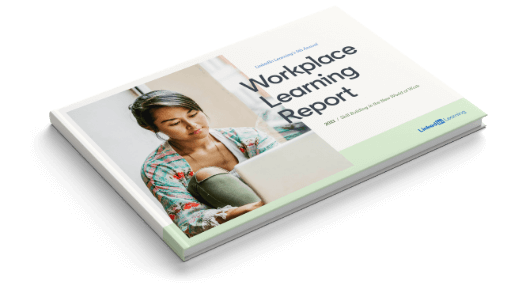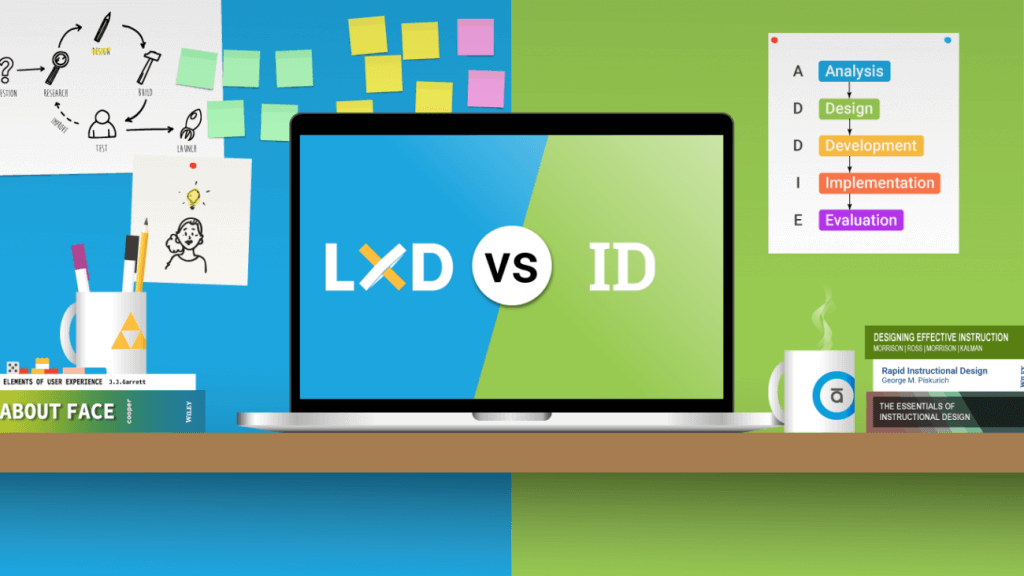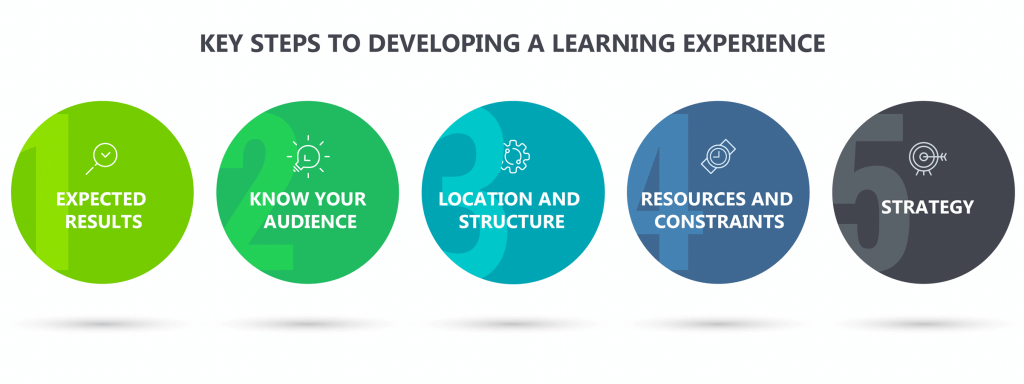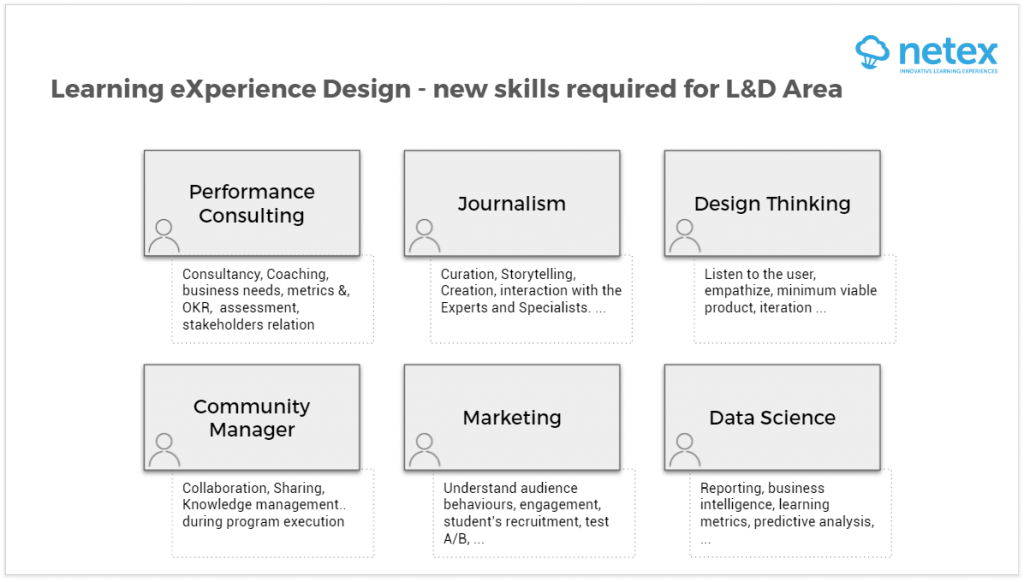Share
In the first part of this blog, we focused on capability academies and how they provide a framework to develop business-relevant skills. In this second part, we are looking at skill development and learning experiences, a step further in our conversation.
According to the World Economic Forum, “the Reskilling Revolution aims to provide better jobs, education and skills to 1 billion people in the next 10 years to contribute to future-proofing countries, companies and workers”(1).
The latest LinkedIn Workplace Learning Report (2021) reveals that L&D professionals consider reskilling and upskilling their “#1 priority (59%) — that’s a 15% increase since June 2020”(2).

As we look at skill development as a priority, a question pops up: how do you develop those needed skills? A skill is not just knowledge from books and online courses — it is rather ‘the ability to use one’s knowledge effectively and readily in execution or performance’, as described by Merriam-Webster Dictionary. Thus, a skill is developed by putting your knowledge into practice, trying it out, receiving feedback, and dedicating time to self-reflection. And if we learn in that way, certainly our learning will last longer and it will be much more rewarding and effective than just reading books or clicking the ‘next’ button on online courses.
We are not saying that reading and clicking the ‘next’ button is awful (although it is sometimes). We are saying that to learn something, especially new skills, we have to follow a different, and usually longer, path. Books and online courses are part of that path, but they are not the whole path. As Julie Dirksen says: ‘Learning experiences are like journeys. The journey starts where the learning is now, and ends when the learner is successful. The end of the journey is not knowing more, it is doing more’(3). Therefore, an effective learning experience should combine content, context, feedback, and technology.
The right professional
The right professional will make the difference between a traditional e-learning content ‘baptised’ as a learning experience, and a genuine learning experience, focused on the experience path design. Typically, an instructional designer is the person who creates and develops scripts for e-learning courses. On the other hand, a learning experience designer is the one concerned with the whole picture: technology, experts, stakeholders, business goals, knowledge transfer, human development, creativity, and so forth.

Niels Floor, a recognised pioneer in the learning experience field, says that an instructional designer is like a scientist and a learning experience designer is like an artist(4). Cool, huh? An instructional designer does apply learning science principles to better organise content and make learning effective. However, if you need more than just obtaining information and applying it in online scenarios, if you are searching for an entire experience to speed up skill development, you will have to create experiential and practical learning. A learning experience designer will definitely give you a helping hand.
Key steps to developing a learning experience
We would like to share with you practical tips to start developing a learning experience.
1. Expected results
Think and list the expected takeaways from the experience. Why will it be relevant to people and to your organisation? What will learners be able to do after the learning experience?
2. Know your audience
Ask them questions, find their needs and expectations, make sure the learning experience will challenge them and make a difference in their lives. Also, take into account everyone involved in the experience: learners, facilitators, managers, peers.

3. Location and structure
Think about the facilities required for a true and practical learning experience: rooms, outdoor sites, online teamwork applications, tours, meeting relevant people outside the office.
4. Resources and constraints
Consider every resource required to develop, launch, and keep the learning experience running smoothly in your organisation. A learning experience may take as long as 4-6 months. What will you need? Can you afford it? Is there any ‘Don’t’ you should think about?
5. Strategy
Once you have a clear picture of the scenario you are dealing with, it is time to discuss and create the foundations for your learning experience. Think about the elements involved, their sequence, who will be participating, their agendas and availability. It is time to draw your very first draft for the entire experience.
6. Activities
Based on your strategy, you will be able to develop every activity and connect them throughout the learning experience. Every event in the experience should be iterative and carefully planned and oriented toward your ‘doing’ goals, making people active learners, and creating a memorable learning experience.
Count on professional advisory and makers
Very few end-to-end Solution Providers offer this holistic approach for designing multimodal experiences as bespoke projects (aka custom or ad hoc). However, to move swiftly towards a learning organisation, you can deep dive into the vendor ocean to get the missing pieces to complete your ecosystem —core technology elements such as LRS (Learning Record Stores), BI dashboards, off-the-shelf content, developing and delivery tools, new platforms, etc.— and look for external consultancy support on Learning Strategy & Implementation or digital content design. Your L&D area may have some of the new core skills and these can be combined with the expertise of external vendors. Take a look at a great team to develop learning experiences.

Also, and probably much more important than technology, delivering multimodal digital learning requires virtual classroom facilitation skills, tutors for learning delivery follow-up, user support services and others.
Supporting all these key players and tech features could be seen as a giant challenge at first. However, keep in mind that if L&D is to add value to business stakeholders (the root of upskilling & reskilling need), the budget may be moved to second place since the value of performance enhancement can surpass and advocate your smart move in the learning strategy. Supporting diagnosis and design of the dreamed solution means value-added actions. And remember, Learning eXperiences create growth conditions for your talented workforce, as described by Sir Ken Robinson:
We have to go from what is essentially an industrial model of education, a manufacturing model, which is based on linearity and conformity and batching people. We have to move to a model that is based more on principles of agriculture. We have to recognise that human flourishing is not a mechanical process; it is an organic process. And you cannot predict the outcome of human development. All you can do, like a farmer, is create the conditions under which they will begin to flourish. (5)
Ken Robinson
What are you waiting for? Start today!
Referencias
(1) Closing the Skills Gap: Regional Skills Projects
(2) 2021 Workplace Learning Report | LinkedIn
(3) Download eLearning Design and Development eBooks
(4) Learning Experience Design vs Instructional Design
(5) Learning as a natural process – The King David School
Photo by María Noel Rabuñal Cantero on Unsplash
Share

